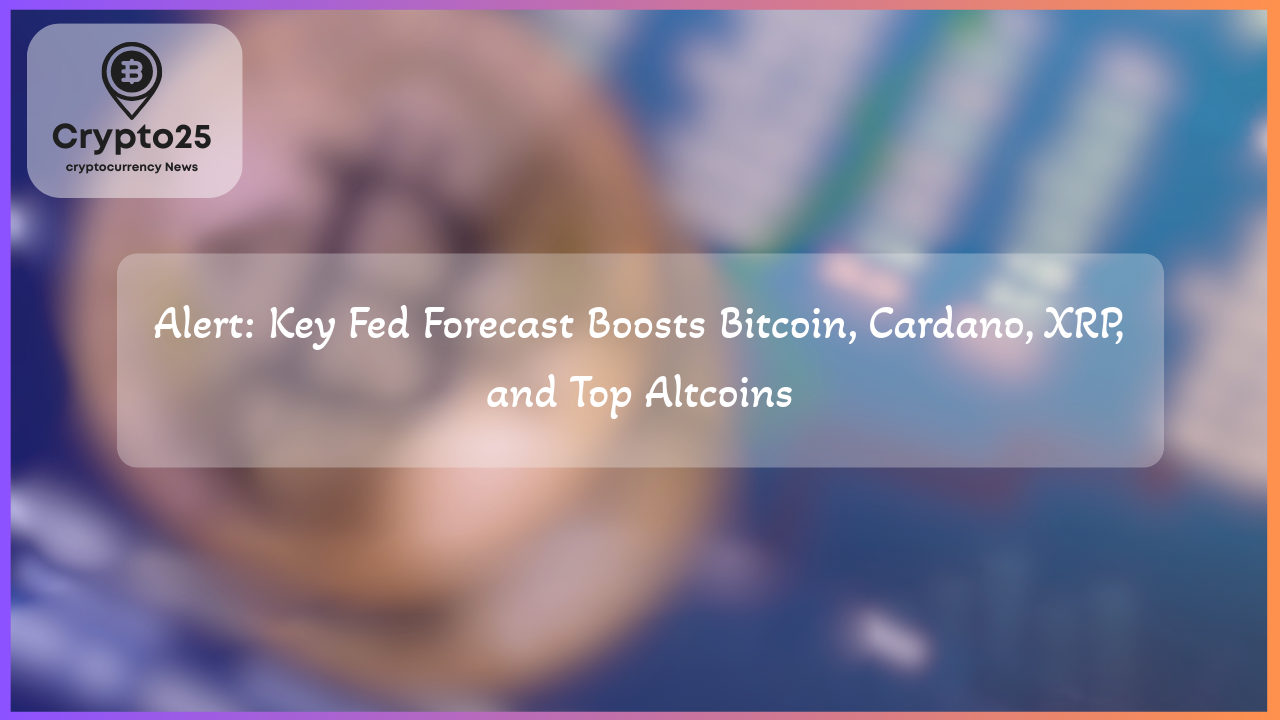
The intensifying trade war between the U.S. and China, coupled with the Federal Reserve’s monetary policy decisions, is creating ripples across financial markets, including the cryptocurrency sector. As global recession fears mount, investors are increasingly scrutinizing the possibility of an emergency Fed interest rate cut, a move that could significantly impact cryptocurrencies like Bitcoin (BTC), Cardano (ADA), and XRP.
## How Federal Reserve Rate Cuts Affect Cryptocurrency Markets
The possibility of an interest rate cut by the Federal Reserve has rekindled investor interest in both traditional and digital assets. Prediction markets such as Polymarket and Kalshi are now pricing in higher odds of an imminent rate cut, with Polymarket participants estimating a 31% probability, compared to just 15% a few weeks prior. Kalshi, on the other hand, reveals a 41% likelihood, representing the highest sentiment since late 2023.
Monetary policy decisions often have a direct impact on cryptocurrencies. For instance, previous instances of rate cuts have historically supported risk-on assets like stocks and crypto. When borrowing costs are lowered, financial liquidity increases, encouraging investment in higher-risk markets. Bitcoin and other major altcoins, underpinned by speculative interest and wider adoption, stand to gain in such scenarios.
This optimism arises as economic tensions mount globally. A newly introduced 104% tariff on Chinese imports, part of escalating U.S.-China trade disputes, is exacerbating fears of slower growth. With China exporting $432 billion worth of goods annually to the U.S., this latest move is expected to strain economic activity on both ends. As this climate of uncertainty unfolds, cryptocurrencies like Bitcoin and XRP are increasingly being viewed as alternative assets to diversify risk.
## Bitcoin, Cardano, and XRP: What’s Next Amid the Fed’s Policy Shifts?
The performance of cryptocurrencies such as Bitcoin, Cardano, and XRP has mirrored the broader financial market downturn throughout 2024. Bitcoin, in particular, has retraced significantly from its previous bull market highs, following trends reflected in major U.S. indices like the Dow Jones, S&P 500, and Nasdaq, each of which has seen declines of over 20% in recent months.
However, the outlook for a Federal Reserve pivot could renew bullish momentum. Historical evidence supports a correlation between monetary easing and crypto market recoveries. During the 2020 COVID-19 crisis, the Federal Reserve implemented multiple interest rate cuts and launched quantitative easing programs. Bitcoin responded by soaring from $4,000 in March 2020 to a record $69,000 a year later. Similarly, altcoins such as Cardano and XRP experienced dramatic gains, with Cardano reaching a peak of $3 while XRP surged near $2 in the same period.
A similar pattern may emerge in 2024 should the Federal Reserve resort to interest rate reductions. Lower borrowing costs could stimulate capital flows into both equity and crypto markets, creating a favorable environment for Bitcoin and notable altcoins to regain ground.
| Title | Details |
|---|---|
| Market Cap | $1.2 Trillion |
## Trade Policies and Fiscal Stimulus: Ripple Effects on Digital Assets
Aside from the Federal Reserve, fiscal policy is also shaping the cryptocurrency outlook. The administration under Donald Trump is reportedly exploring measures such as tax incentives for exporters and bailouts for agrarian sectors impacted by international trade tensions. Should this materialize, it could further fuel optimism in risk-on markets like cryptocurrencies.
Economic stimulus, whether through monetary easing by the Fed or fiscal measures by the government, indirectly boosts crypto demand. This is primarily due to increased liquidity, reduced interest rates, and a weakening U.S. dollar—all of which create an accommodative environment for digital currencies. Bitcoin, often labeled as “digital gold,” serves as a hedge against such macroeconomic risks, driving institutional and retail adoption during periods of significant dollar weakness.
As recession pressures weigh heavily on global markets, Bitcoin, Cardano, XRP, and other cryptocurrencies stand to benefit from policy response measures aimed at cushioning the economy. If history is any guide, accelerated adoption and renewed price rallies could define the months ahead, making this a critical moment for crypto investors to stay vigilant.
The current economic conditions and potential policy responses underscore the intricate relationship between global finance and the cryptocurrency market. Whether through a Federal Reserve pivot or fiscal interventions, these factors could play a pivotal role in dictating the trajectory of digital assets in 2024 and beyond.
